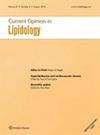运动与脂蛋白之间的临床联系。
IF 3.8
3区 医学
Q2 BIOCHEMISTRY & MOLECULAR BIOLOGY
引用次数: 2
摘要
综述目的:血脂异常(DLD)的控制恶化是全球健康的主要问题之一,它是心血管疾病(CVD)结局的一个非常强的可改变危险因素。它是动脉粥样硬化病变的基础,可通过导致远端凝块迁移和其他相关CVD事件的共炎症过程而不稳定。关于DLD的管理存在许多误解。许多卫生部门提倡减肥,但没有明确的目标来实现更好的心血管疾病结果。越来越多的证据表明,无论体重变化如何,坚持运动训练是一个更可靠的有利结果指标。本综述旨在了解运动训练、脂蛋白读数与CVD和全因发病率和死亡率之间的关系。最近的研究发现:有氧运动训练(aET)和阻力运动训练(rET)分别增加心肺适能(CRF)和肌肉力量(MusS)。不管体重减轻与否,已知aET和rET都能独立降低死亡率,可能部分是通过改善脂质谱。在两种运动模式中,rET具有增强依从性的倾向,因为它具有显着的脂质和死亡率降低效果,即使只是短暂的运动。然而,有几项研究表明,与单独进行任何一种运动训练相比,参与两种运动模式对DLD和cvd相关死亡率的改善更为显著。此外,脂蛋白a [Lp(a)]因其低密度脂蛋白核心而被越来越多地认为具有动脉粥样硬化的作用。Lp(a)与巨噬细胞的密切接触触发了动脉粥样硬化的发展、斑块的形成和生长。这引起一连串的炎症过程,增加缺血性心血管疾病和钙化性主动脉瓣狭窄的发展。虽然已知运动训练可以降低血浆LDL-C水平,但它对Lp(a)水平没有直接影响,因为后者不受运动和运动的影响。对多项研究的回顾使我们推断,运动训练可能对Lp(a)的降低有潜在的间接影响,因为运动训练能够抑制枯草素/可辛9型蛋白转化酶(PCSK-9),因为一些使用PCSK-9抑制剂的药物治疗能够显示Lp(a)水平的降低。总结:很明显,与久坐不动的人相比,经常运动的正常到超重的人有更好的心血管疾病结果和脂质谱,而体重过轻和不健康的人的情况更糟。这使我们能够采取更精确的方法来管理DLD,而不是简单地关注患者的总体重。由于运动训练对脂蛋白水平和颗粒大小的有利影响,它当然对长寿有有益的影响。因此,著名的健康协会,如ESC、ACC和AHA都规定了理想的运动训练方案,它们有明显的相似之处。增加可穿戴设备的使用可能有助于提高我们处方、量化和精确跟踪身体活动的能力,以继续努力对抗与不健康的生活方式和不运动相关的日益增加的发病率。本文章由计算机程序翻译,如有差异,请以英文原文为准。
Clinical associations between exercise and lipoproteins.
Purpose of review One of the major concerns in global health is the deteriorating control of dyslipidemia (DLD), which is a very strong modifiable risk factor for untoward cardiovascular disease (CVD) outcomes. It serves as a foundation for atherosclerotic lesions that can be destabilized by co-inflammatory processes leading to distal clot migration and other related CVD events. There are many misconceptions regarding the management of DLD. Many health sectors advocate for weight loss without a clear-cut target to achieve better CVD outcomes. There is growing evidence that exercise training compliance regardless of weight change is a more reliable indicator of favorable outcomes. This review is intended to understand the relationship between exercise training, lipoprotein readings, and with CVD and all-cause morbidity and mortality. Recent findings Aerobic exercise training (aET) and resistance exercise training (rET) increase cardiorespiratory fitness (CRF) and muscular strength (MusS), respectively. Regardless of weight loss, aET and rET are both known to independently reduce mortality possibly partly through improvement of lipid profiles. Of the two modes of exercise, rET has propensity for enhanced compliance because of its significant lipid and mortality-attenuating effect even with just brief exercise sessions. However, there are several studies showing that participation in both modes of exercise causes more pronounced improvements in DLD and CVD-related mortality compared with either mode of exercise training alone. In addition, Lipoprotein-a [Lp(a)] has been increasingly acknowledged to be atherogenic because of its LDL core. The close proximity of Lp(a) with macrophages triggers the development of atheromas, plaque formation, and growth. This causes a cascade of inflammatory processes that increase the development of ischemic CVD and calcific aortic valve stenosis. Although exercise training is known to reduce plasma LDL-C levels, it has no direct effect on Lp(a) levels as the latter lipoprotein is not influenced by motion nor exercise. Reviews of multiple studies lead us to infer that exercise training may potentially have an indirect impact on Lp(a) attenuation because of the ability of exercise training to inhibit Proprotein Convertase Subtisilin/Kexin type-9 (PCSK-9), as some studies using pharmacologic therapy with PCSK-9 inhibitors were able to show a concomitant decrease in Lp(a) levels. Summary It is clear that normal-to-overweight populations who are highly active have better CVD outcomes and lipid profiles than their sedentary counterparts, and those who were underweight and unfit fared much worse. This allows us to take a more precise approach in the management of DLD rather than plainly focusing on gross weight in patients. Exercise training certainly has beneficial impact on longevity owing to its advantageous effect on lipoprotein levels and particle size. As such, reputable health societies, such as the ESC, ACC, and AHA have prescribed the ideal exercise training regimen, which have noticeable similarities. Increasing the use of wearable devices may help improve our ability to prescribe, quantify, and precisely track physical activity in our continuing efforts to combat increasing morbidity related to unhealthy lifestyles and inactivity.
求助全文
通过发布文献求助,成功后即可免费获取论文全文。
去求助
来源期刊

Current opinion in lipidology
医学-内分泌学与代谢
CiteScore
6.70
自引率
4.50%
发文量
64
审稿时长
6-12 weeks
期刊介绍:
With its easy-to-digest reviews on important advances in world literature, Current Opinion in Lipidology offers expert evaluation on a wide range of topics from six key disciplines including nutrition and metabolism, genetics and molecular biology, and hyperlipidaemia and cardiovascular disease. Published bimonthly, each issue covers in detail the most pertinent advances in these fields from the previous year. This is supplemented by a section of Bimonthly Updates, which deliver an insight into new developments at the cutting edge of the disciplines covered in the journal.
 求助内容:
求助内容: 应助结果提醒方式:
应助结果提醒方式:


